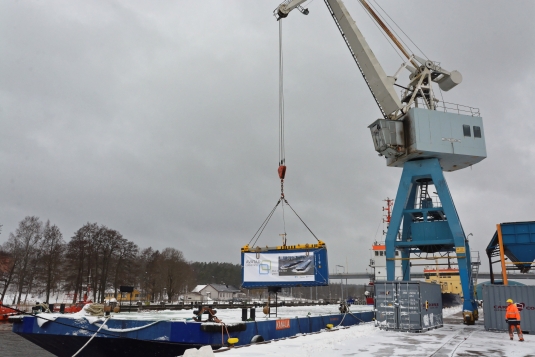

Barge traffic (part 1/2): A transport mode of its own!
Barge traffic, also known as inland navigation/inland waterway transport. Is it a real opportunity for Sweden? Yes – read to know why!
Inland waterway transport by barges provides the greatest opportunity to move goods from land to waterways. Taking advantage of barges creates a more sustainable and efficient inland transportation system. In Sweden, there are EU classified waterways in both metropolitan areas. Thus, inland waterway transport can strengthen the regional logistics where city streets are congested, population and need for transportation has increased, and land infrastructure is strained, needing maintenance and invests. At the same time, there are excellent Swedish waterways with a big capacity, ready to be taken advantage of. The barges, “megatrucks of waterways”, can complete the transport system and create and ensure sustainable transport solutions for future. Inland waterways can therefore be called diamonds for transport system.
The European Union considers the use of inland waterway transport for transporting goods as obvious, whereas Sweden has, until now, closed its eyes to barge traffic and has not invested in it. This must change. Sweden must learn from the other parts of the EU how to take advantage of inland waterway transport and the barges that are specially built for inland waterway transport. Within the EU, inland waterway transport is a well-known mode of transport which has been developed for decades.
It is important to know that inland waterway transport with barges differs from seagoing navigation: transport model is different, waterways are different, and so are the ships, their technology and steering facilities too. Within the EU, seagoing navigation is called maritime transport, whereas barge traffic is called inland navigation or inland waterway transport. The inland waterway transport by barges is one of the three transport modes (road, rail and inland waterway transport) that can be used for inland transportation. The inland transportation system in the European Union is designed for these three modes of transport.
In conclusion, inland waterway transport represents a big opportunity for Sweden and for the Swedish inland transportation system (when it comes to transport, economy or environment) and can contribute to inland transportation system in future. Therefore, Sweden must include barge traffic in the transport plans nationally, regionally and locally. To make this a reality, barge traffic must be considered as its own mode of transport and treated like trucks when it comes to inland transportation. Together the waterways, rails and roads constitute the Swedish transportation network. A fundamental and persevering decision must be made to ensure this.
Inland waterway transport is a mode of transport of its own and should be treated like that. This, in addition to EU’s regulation of inland waterway transport, must be the starting point for its regulation and requirements. And yes, Sweden really needs inland waterway transport.

Johan Lantz, Avatar Logistics, johan.lantz@avatarlogistics.se
Anna Hammargren, Fullpage Communications AB, anna@annahammargren.com